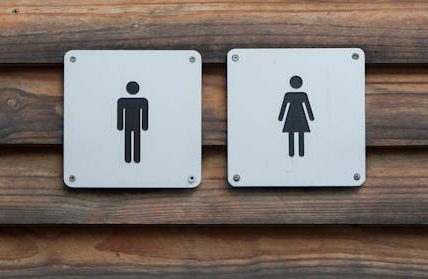Did the Sun boycott make Liverpool more leftwing? My study indicates it may have shifted views
Most newspapers in the UK tend to represent a political perspective. It is difficult to measure the extent to which someone’s media consumption affects their political views – but what if you take one newspaper out of the equation?
In a recent study, I sought to examine how the longstanding boycott of the rightwing tabloid the Sun in Liverpool affected people’s political attitudes up to 2004. I found that the Sun – and its removal from the media landscape in Liverpool – held considerable sway.
On April 15 1989, a tragic stadium crush at the FA Cup semi-final football match between Liverpool FC and Nottingham Forest led to 97 deaths and hundreds of injuries. The Sun inaccurately blamed Liverpool supporters for what came to be known as the Hillsborough disaster.
Many newsagents and readers in Liverpool subsequently boycotted the Sun, cutting its circulation in Merseyside to about a quarter of what it had been. Audience and newsagent surveys show that people in Liverpool who had bought the rightwing Sun, often replaced it with more neutral or leftwing newspapers (primarily the Daily Mirror).
In neighbouring parts of the country, there was no such shift in readership. A boycott remains in effect in Liverpool today, despite apologies from the paper in 2004, 2012 and 2016.
Read more:
Why The Sun newspaper will never shine in Liverpool
Now, you’ve probably heard the phrase “correlation is not causation”. There were many other changes that occurred in northern England and Liverpool during the period that I study from 1983 to 2004.
My research sought to avoid confusing the effects of those changes with the effects of the boycott. For example, the period was marked by the Thatcher governments, de-industrialisation and their aftermath. For many in Liverpool those policies of that era were to blame for extremes of poverty and deprivation in the area. Amid that, the Labour party’s Militant faction rose to prominence in Liverpool, taking control of the city council from 1983 to 1986.
These events are central to the politics and social picture of Merseyside that emerged. But to what degree did the boycott of The Sun play a part in shaping it?
My study used a statistical method called triple differences. This meant calculating how political attitudes changed among the Sun’s core audience in Liverpool (the group which was exposed to the boycott) compared to people in Liverpool who were not in the Sun’s core audience, and relative to similar parts of northern England (the control group, which was not exposed to the boycott). I also controlled for other factors that could shift between these groups over time, such as parliamentary constituencies, gender, class, ethnicity, religion, education, union membership and home ownership.
These methods helped me assess the possible effect of the boycott on ideological positions, perceptions of Labour party positions, and Labour party support. I also conducted additional studies to consider whether these shifts began before the boycott, which would suggest that they were due to other factors. The results indicate to me that these shifts in political attitudes began during the boycott (although the data did not permit this test for perceptions of party positions).
I used data from the annual British Social Attitudes surveys administered by the National Centre for Social Research to measure social and political attitudes and demographics. The sample is composed of 12,771 northern English respondents between the years 1983 to 2004, which includes several years both before and during the boycott.
The study identified three main changes in the aftermath of the boycott (and the shift to more leftwing media). First, the boycott may have caused the Sun’s previous audience in Liverpool to perceive the Labour party as less “extreme”. This was compared to other people in Liverpool (whose perceptions of Labour as extreme stayed level) and northern England. It is of course worth noting that this was a period of considerable change in the party, as Tony Blair’s leadership moved it significantly to the centre, though my statistical methods attempt to address this.
The period also saw those former Sun readers in the city adopt more opinions traditionally regarded as left wing, including being in favour of increasing the power of trade unions. “Non-audiences” in Liverpool and other people in northern England were less likely to express a change of view. (Other ideological opinions, about redistribution and European integration, did not shift as much.)
Third, support for the Labour party increased among the Sun’s former core audience in Liverpool, compared to other people in Liverpool (who actually slightly reduced their support for Labour) and people who were not exposed to the boycott. These shifts happened from the beginning of the boycott in 1989 until 1996 (before the Sun endorsed Labour) and continued until at least 2004 (when my data ends).
My study makes use of a real-world change in media consumption that spans many years. The value of the Sun boycott as a “natural experiment” (observing real-world events) was first identified by researchers who found that the boycott reduced Euroscepticism.
Media influence
The Sun famously ran the 1992 headline “It’s The Sun Wot Won It”, claiming credit for the Conservative general election victory. Clearly, newspaper publishers then felt they could influence political views.
But perhaps a more interesting finding from my study is how this may happen. My results suggest to me that media influences how people perceive party positions. This is something that governments, publishers, and critically voters should take into account if they want to address the effects of media on elections.
Lucas Paulo da Silva does not work for, consult, own shares in or receive funding from any company or organisation that would benefit from this article, and has disclosed no relevant affiliations beyond their academic appointment.


